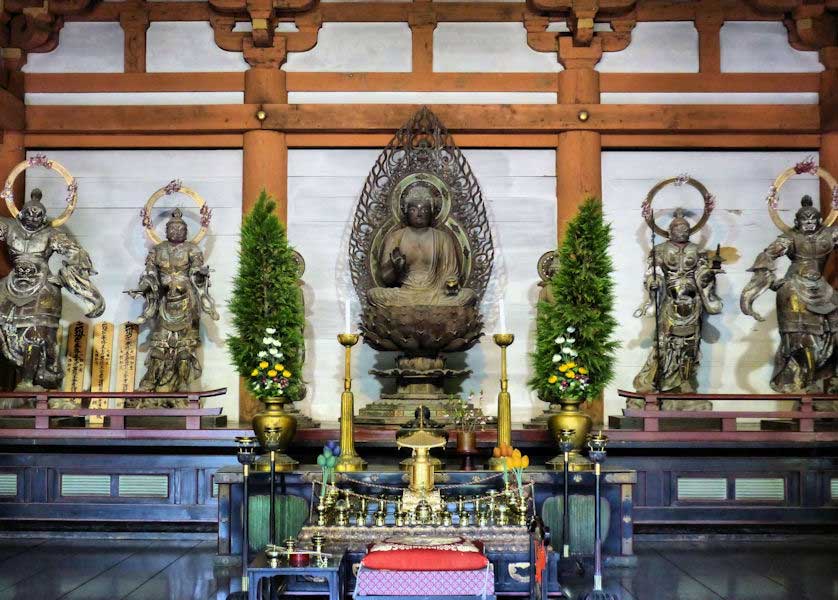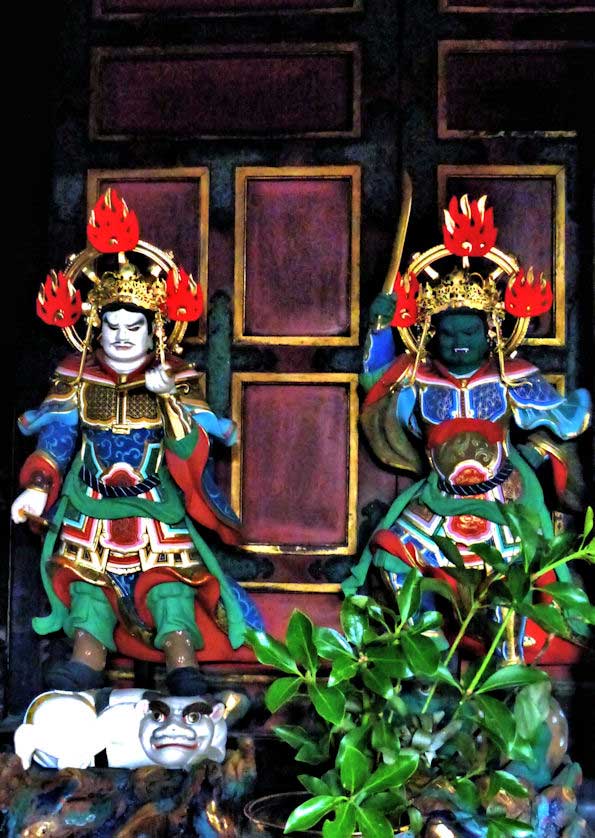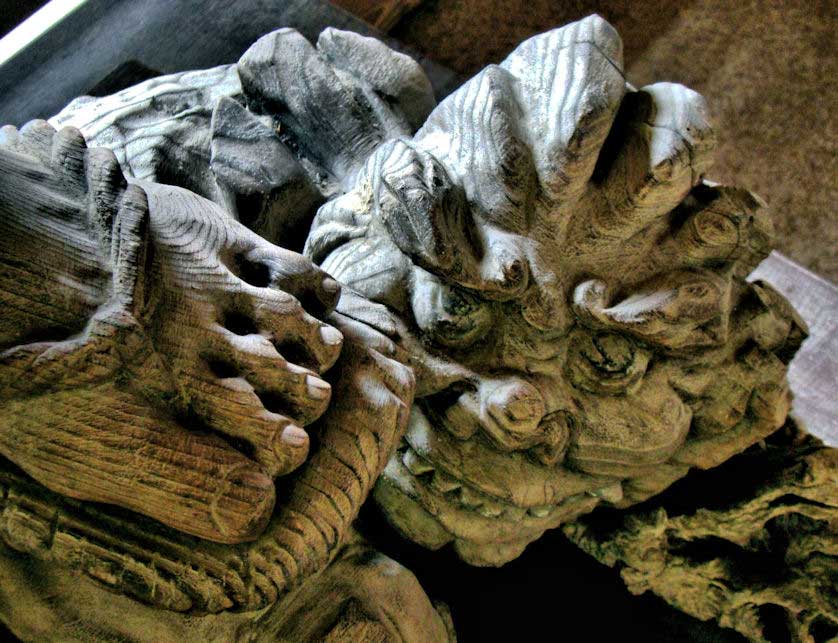Shitenno, the Four Heavenly Kings of Buddhism

The four Shitenno flanking a Buddha statue at Daigoji Temple near Kyoto
In Japanese Buddhism, the Shitenno (四天王) are four fierce-looking Buddhist deva deities who serve as protectors of Buddha's teachings and temples. Often found flanking the Buddha statues or guarding the temple gates, they are part of the celestial beings known as tenbu (deva) in the Buddhist hierarchy. With their ferocious expressions and warrior-like appearance, the Shitenno may seem out of place in a Buddhist setting, but they play a vital role as guardians of the Dharma.
The four Shitenno and their attributes
The Shitenno are each associated with a cardinal direction, season, color, and particular attributes:
- Tamonten (多聞天) of the North is linked to winter and the color white or black. He carries a pagoda or stupa, representing his association with wealth and the propagation of Buddhist teachings.
- Jikokuten (持国天) of the East is connected to spring and the color blue or green. Bearing a sword and staff, he represents protection of the nation.
- Zochoten (増長天) of the South is tied to summer, the color red, and the virtues of growth and prosperity. He is depicted with a hand on his hip and a polearm in the other.
- Komokuten (広目天) of the West represents autumn, the color white, and the ability to see through evil. He carries a brush and scroll, symbolizing his power to punish wrongdoers.
All four typically trample small demon-like creatures called jaki under their feet, signifying their power to subdue evil forces.

A brightly painted Shitenno, probably Jikokuten, in the gate at Kumadaniji
The role and powers of the Shitenno
As protectors of the four compass directions, the Shitenno safeguard the Buddhist Law (Dharma) and its followers. They suppress negative influences, as represented by the jaki demons they step upon. The Shitenno are also believed to report on the state of human morality to the assembly of devas, serving as intermediaries between the celestial and earthly realms. Sworn to defend the Buddha, his teachings, and devotees, their fierce countenance reflects their role as spiritual warriors.

Guarding the Great Buddha at Todaiji in Nara, Komokuten is one of only two Shitenno statues completed there. The heads of the other two are also on display
Taishakuten, commander of the Shitenno
In some traditions, a fifth figure named Taishakuten (帝釈天) is considered the commander of the Shitenno. Representing the central direction, Taishakuten statues are far less common compared to the main four guardian kings. His presence reinforces the protective mandala formed by the Shitenno around the sacred space.
History of Shitenno in Japanese Buddhism
The Shitenno have been part of Japanese Buddhism since its early days in the 6th-7th centuries. Shitennoji templein Tennoji, Osaka, one of Japan's oldest temples founded in 593 AD, was dedicated to them. Throughout the centuries, famous Shitenno statues considered National Treasures were created at temples like Horyuji, Kofukuji in Nara, and Toji in Kyoto.

A pair of Shitenno on display at Kegonji Temple in Gifu, the final temple of the Saigoku Kannon Pilgrimage
Where to see Shitenno statues
Visitors to Buddhist temples in Japan can often find the Shitenno figures:
- Flanking the main Buddha image in the temple hall
- Placed at the four corners of the central altar
- Guarding the temple gates, two in front and two at the back
- On display in the temple museum or treasure house, especially historic sculptures
While the original colors may have faded over time, these powerful guardians still impress with their dynamic poses and fierce expressions.

Shitenno are usually depicted standing on or stepping on small demonic creatures called Jyaki or Jaki
Shitenno in the context of Buddhist cosmology
In the Japanese Buddhist cosmology, the Shitenno rank below Buddhas, Bodhisattvas like Kannon, and Wisdom Kings (Myoo). They are part of the deva realm, along with other protectors like the Nio guardians and Seven Lucky Gods such as Ebisu.
Originally derived from Hinduism, the Shitenno's role was to guard the realm of the 33 devas on Mt. Sumeru from attacks. As Buddhism evolved, they became protectors of the Dharma, temples, and devotees. This shift reflects how Buddhism integrated existing beliefs as it spread across Asia.
For those interested in learning more, the Books on Japan section provides insightful resources on Japanese Buddhism, art, and culture. By understanding the Shitenno's significance, one gains a deeper appreciation for the rich symbolism in Japan's Buddhist temples.








